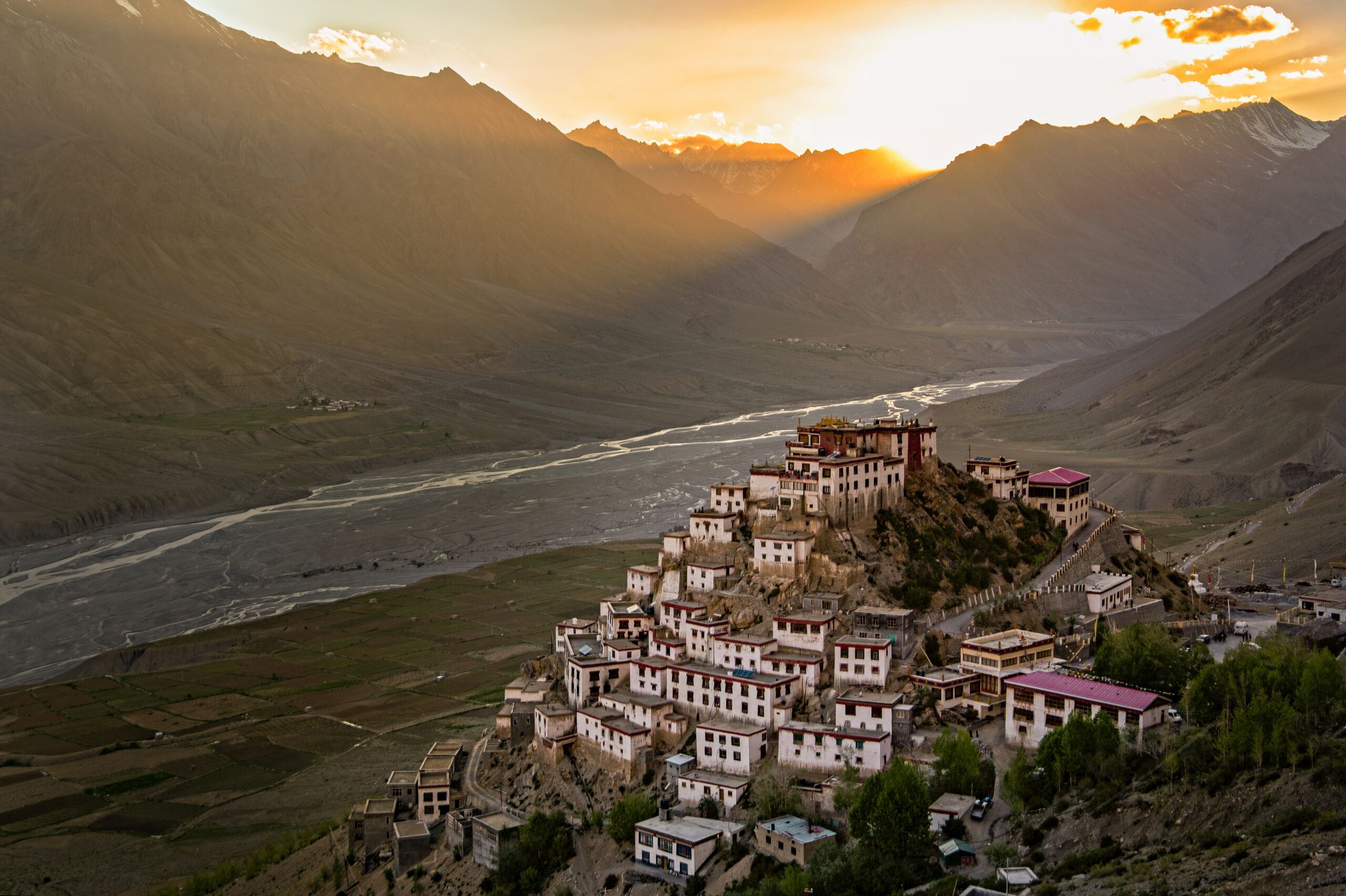Perched at a majestic 4,166 meters above sea level, Ki Monastery—also known as Kye or Kee Gompa—is not just the largest Buddhist monastery in Spiti Valley but also an emblem of resilience and spiritual depth. Founded in the 11th century by the disciple Dromtön of Atisha, it quickly became a premier center of learning for the Gelugpa Tibetan Buddhist order, with over a hundred monks by the mid-19th century.
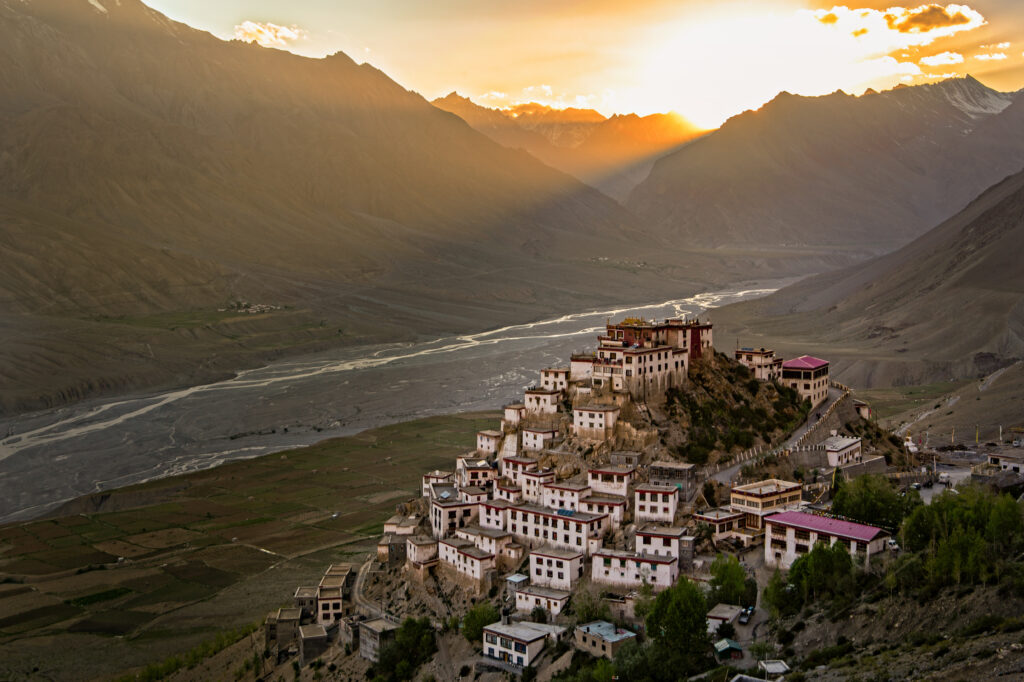
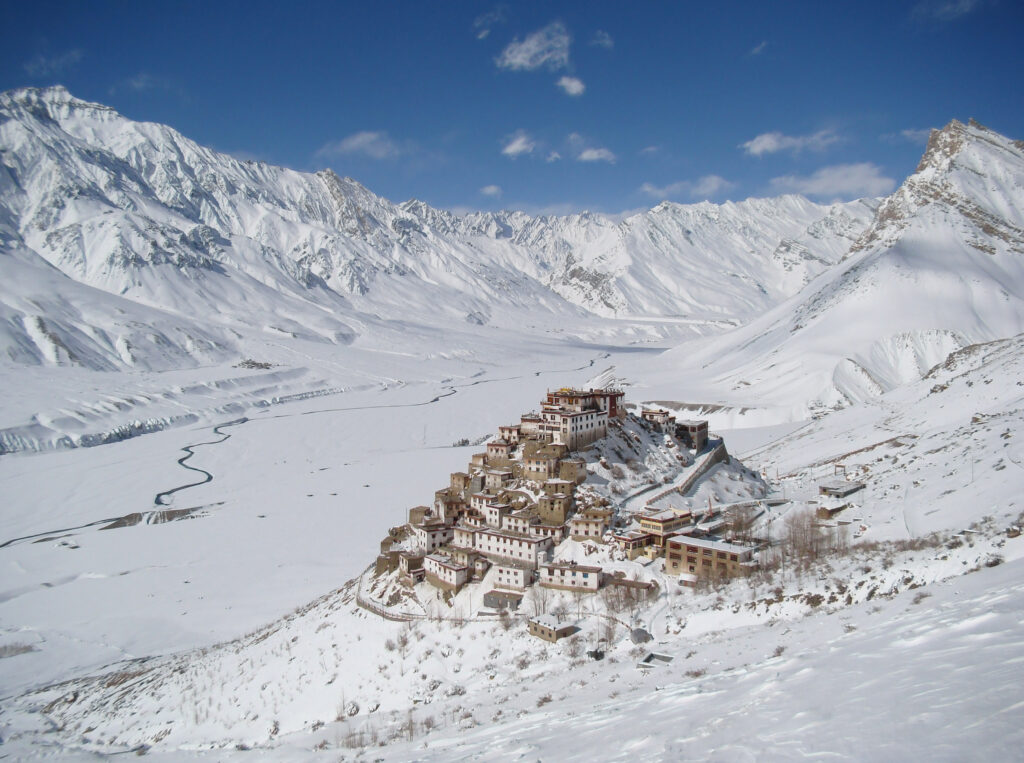
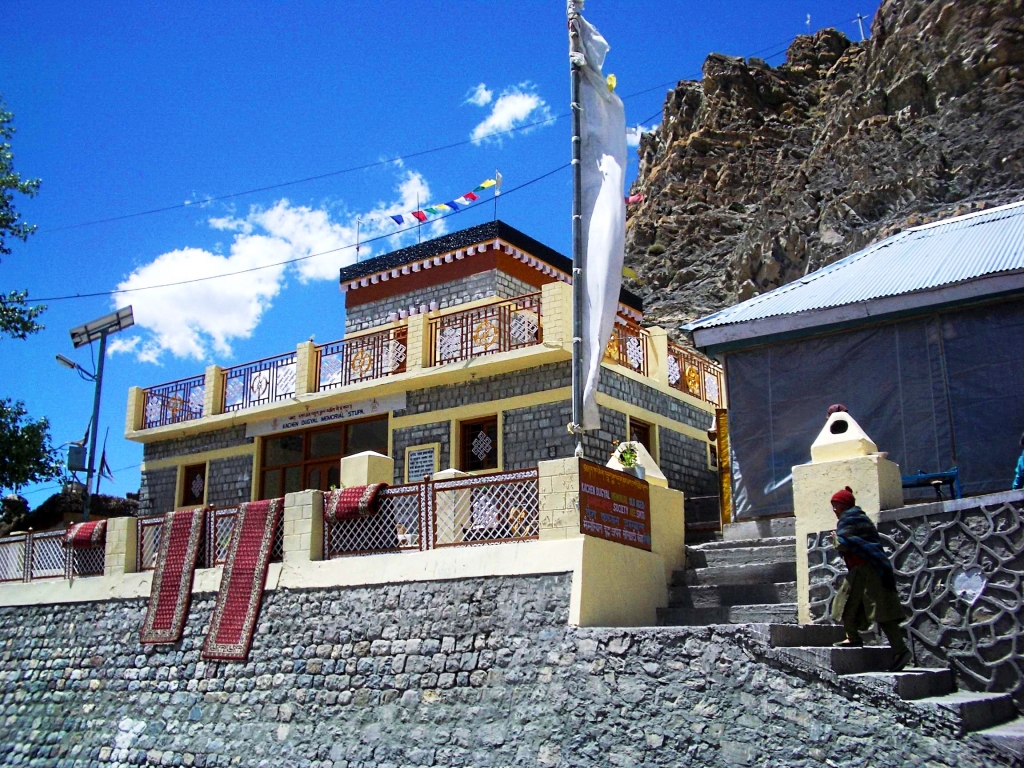
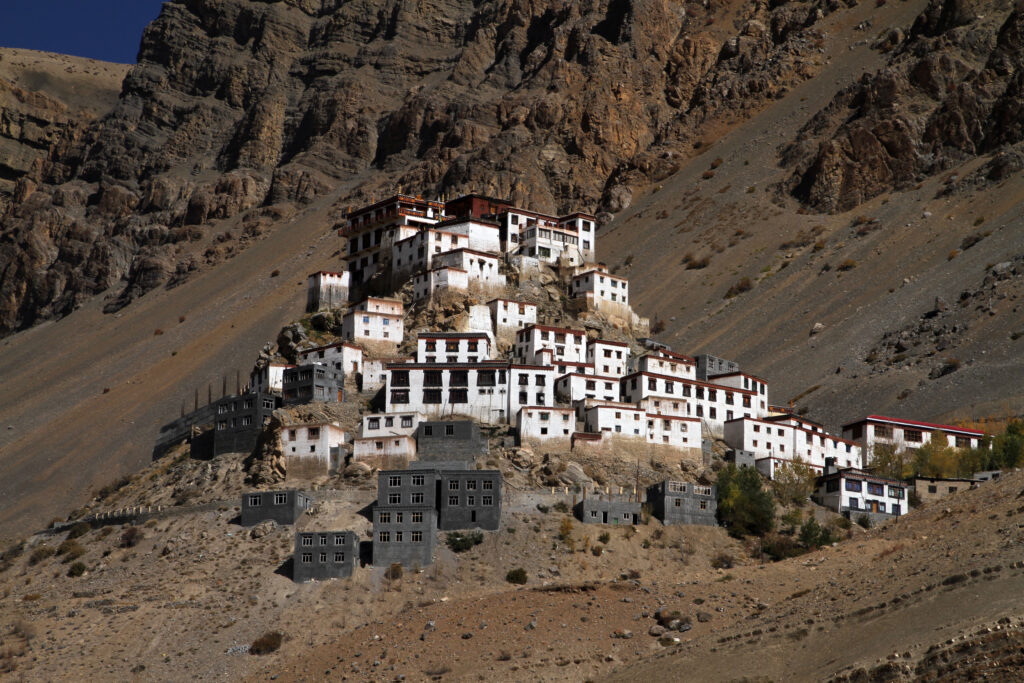
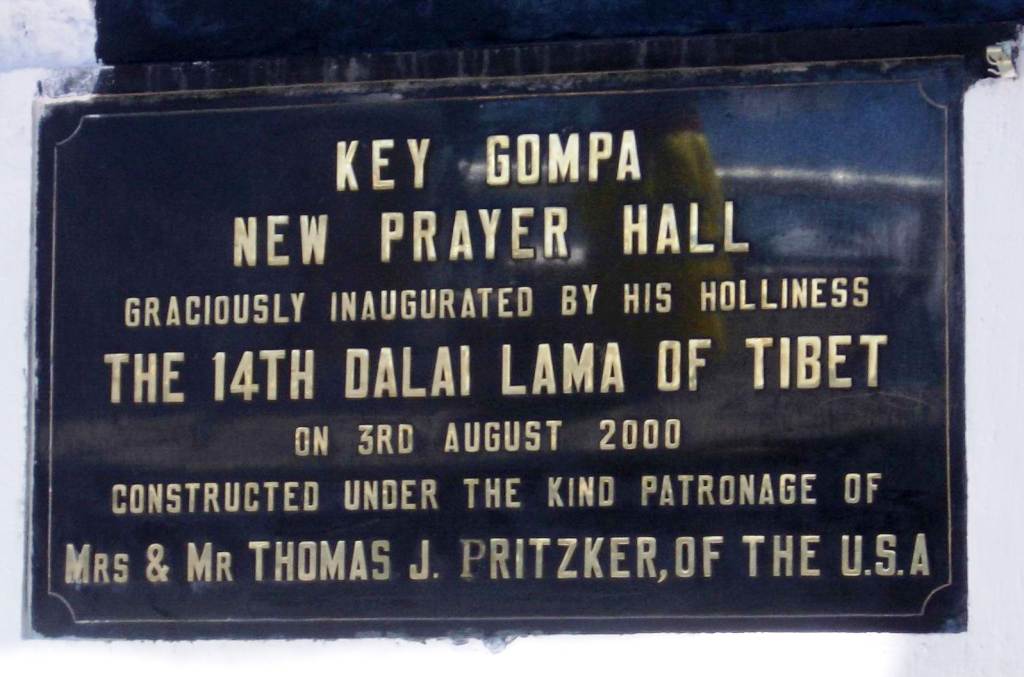
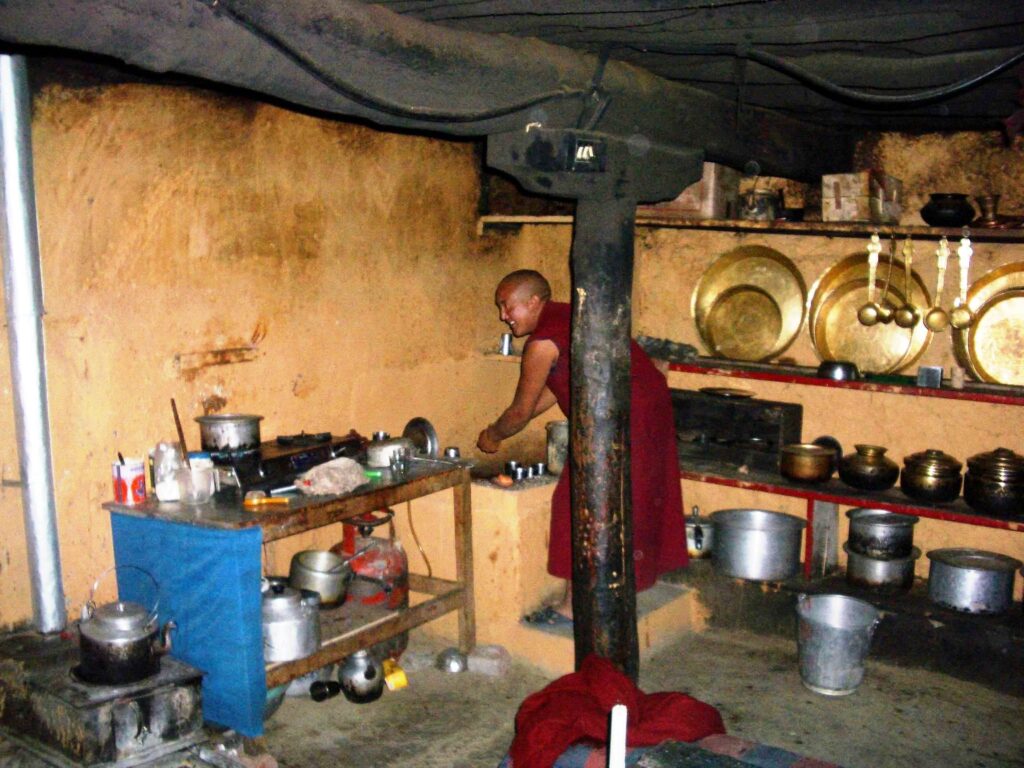
Ki Gompa appears like a natural extension of its cliff-side home—tier upon tier of whitewashed buildings stacked in fortress-like fashion. Its thick mud-brick walls and wooden beams bear the weight of centuries, having endured Mongol invasions, Dogra attacks, fires, and even earthquakes. Inside lies a treasure trove: intricate murals, ancient thangkas, collections of manuscripts, and rare ritual instruments. Its Du-Khang assembly hall and the muraled Tangyur chamber are living testaments to a thousand-year legacy.
Nicknamed the “Monastery at the Center of the Mandala,” Ki Monastery isn’t just architecture—it’s a meditation in stone. As monastic chants echo through its corridors, visitors feel a profound sense of stillness. Early morning, one can witness robes dancing in prayer, monks lighting butter lamps, and the valley below waking at the foot of this spiritual citadel.
Arrive before dawn and watch the valley awaken in golden light—Ki’s silhouette etched against painted skies. Explore narrow passageways leading into monks’ cells, prayer halls, and meditation caves—all rich with ancient murals and scrolls. If you’re lucky enough to visit during the Cham Festival in June or July, you’ll witness masked monks perform sacred dances representing cosmic battles—a celebration of devotion and tradition. From the monastery’s rooftop, the layered spires and fluttering prayer flags seem to float above the rugged ridges—an unforgettable sight that leaves you in awe.
If your soul craves spaces of silence that resonate louder than words, Ki Monastery offers such sanctuary. It embodies both history and hope—a spiritual fortress that stands tall despite the winds of time. For seekers of culture, nature, and quiet self-reflection, Ki isn’t merely a stop—it’s a milestone in every meaningful Spiti adventure.
Planning to explore Ki Monastery? The best time to visit is between May and September, when the high-altitude roads are accessible, the skies are clear, and every sunrise feels like a quiet blessing.

